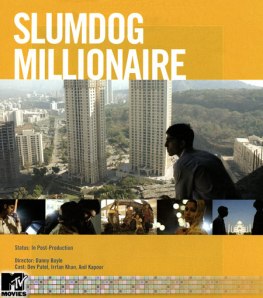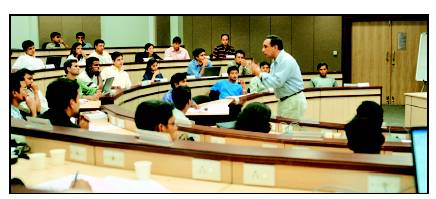Article by: K.P. Praveen Nair

Now a days, literary circles in India are pretty much contented as two prestigious and much coveted awards for the literature came India’s way. As an Indian I feel overwhelmingly honoured and privileged and it is an encouragement for all the young and emerging talents of India who want to step into the art of literature, especially English literature. But the question that bothers me is what exactly we will have to write to get these awards?
My advice would be, writing something nasty about your own country would be a nice option like what Aravind adiga did in his first book The White tiger. Or make a movie that shows how nasty and pathetic things are in India and how people in India suffer under draught and penury. I can assure you that you will walk away with your head high with the awards bestowed upon you by white people.
This is not the first time India has bagged the man booker prize. Before Aravind Adiga, there were Salman Rushdie, Arundhati Roy and Kiran desai who managed a booker prize, adding gloss to their resume. Initially I thought of reading all the booker prize winning novels written by Indian authors and I started off with our latest one which deals with the story a chauffeur turned business man. The story nicely segued from one incident to the other constantly and uninterruptedly blaming the Indian system. It discussed poverty, corruption, deceit, political sleaziness, infidelity and treachery in the best possible way right through the book. Â I leafed each and every page with a sigh and desperately hoping to read at least one good sentence about my own country on whose behalf he proudly received the honour.

After reading the whole story, I wondered, was he talking about the same India in which I live? Â It needs a lot of guts to call ones own birthplace darkness, which he uses proudly through out the book as if he had invented the best metonymy possible. Our author seems very keen on degenerating himself when he brazenly puts it,… south is full of tamilians and you know who tamilians are? They are Negroes… (One should not forget he is Chennai born) The whites would definitely have enjoyed it, wonâ they? Who was he trying to please? ?
Aravind Adiga holds dual nationality, half Indian and half Australian (I guess, before writing such (so-called) big truths about India, at least he should have decided on his Nationality). Kiran desai, another Booker prize winner, interestingly, is an Indian citizen living in America and writes about India. I would not mind if she were an American citizen living in India and writing about India. Â Salman rushdie lives in London writes about India (Unfortunately I have not read any of their books and I dont intend to) the only exception is Arundathi Roy. And these people walk away with honours for maligning and defaming India.
The same thing holds true to the much hailed English movie The Slum dog Millionaire, the golden globe winning movie of 2008. A Film directed by Danny Boyle, an English director on Indian slums. (Apparently) It tells the story of a boy born and brought up in Mumbai slums. Is this the only slum in the world? Does not he have a slum in England? He could also have tarnished the image of his home town. Why did he choose an Indian slum casting Indian actors, and an Indian music director? Are Indian slums more real than theirs? Too many questions creep into my mind. !!!!
Tired of all this reading, my initial desire to read all the booker prize winning novels drowsed. Then I switched to R.K.Narayan’s Malgudi days. (Purely because, my professor had once told me to read his novels if I wanted to improve my English.) He tells the stories of Negroes in India as he himself is a Negro (according to Aravind Adiga). But here I saw my real India. The India where I live. The India where most of the people in India live. He talked about the ever-tolerant people of India who despite all the wickedness and flaw of the society lived a contented life. He tells the stories of a true democratic country.
All these are not to say that one has to be on sided in their approach. Address the issues that are a bane on us. Write with an intention to change the system for the better. If you are hurt by the system try to mend for the better and stop fussing and whining. Bring out or suggest a solution in the end. Individuals make the society; society is not corrupt per se. It is we, the individuals as a group who make the society corrupt. And in our story our white tiger adapts himself to the flawed society with a little bit of qualm which is not convincing at all.
“Society does not consist of individuals but expresses the sum of interrelations, the relations within which these individuals stand.”
A famous quote by Karl Marx rightly puts it. The stress should be on improving relationship and not on the individual. If our country is darkness at least make an attempt to light a lamp to show the right way, and stop moaning. It will enlighten the lives of many around you.
Fussing in the darkness for the literatures sake would have made Aravind Adiga the new face of Indian literature, but his work will never be recognized by the complete Indians (who lives, works and dies in India), unless he lights at least a candle to brighten the darkness.
(Source: http://www.globalvisiononline.net/a4.html)
Read Full Post »



